Generation XII: Charles Revives the Family Fortunes

Charles Edward Colburn with a team of horses before some of his hop vines, circa 1900
After two generations that left very little mark on the world, Charles Edward Colburn (1852-1916) seems to have arrived bursting with energy. He became a successful hop farmer and cattle-breeder.

The town of Milford, Otsego County, NY
Three generations of Colburn had farmed in the valley of the Unadilla River. Charles moved his family over the hills east to the valley of the Susquehanna, which was both larger and commercially more central, at least after 1869 when a railroad began running along the river. Charles maintained large houses both in the railroad depot town Milford and at his Hillside Stock Farm, within Milford township above the southern hamlet of Portlandville.

In the 1880 census, Elijah Colburn's recently widowed Susan is listed as head of household. Oldest son Charles and youngest son Starr are listed as "farm Laborers." The census erroneously reports Charles's wife Charlotte ("Lottie") and their children Jay and Lena as children of Susan.
A year after his father Elijah died, the 1880 census shows Charles living with his mother Susan, youngest brother Starr, wife Charlotte ("Lottie") and two young children (Jay and Lena).
A photograph taken a few years later, annotated in Lena's adult hand, shows the family in front of a farmhouse. This may have been another rented property.

Charles and Charlotte Colburn family, circa 1883. Charles holds the reins of team of white horses hitched to a cart.
The younger woman seated left, next to the children, is probably Charlotte. The older woman at center is likely Elijah's widow Susan (if so, this is the only known photograph of her.) An annotation in the adult Lena's hand identifying the woman seated center as Charlotte is probably in error. She looks to be more of a grandmotherly age.
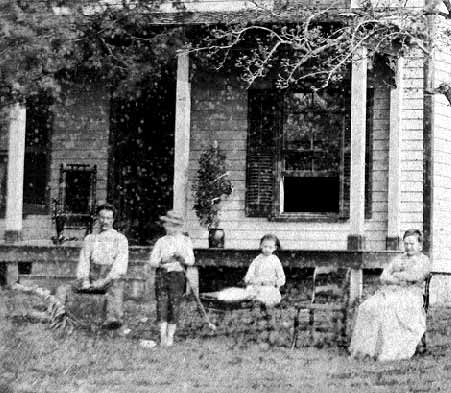
A closer view of Charlotte, Jay, Lena and Susan.

Wedding certificate of Charles Colburn of Morris and Lottie Chase of Laurens, 10th day of April 1875.
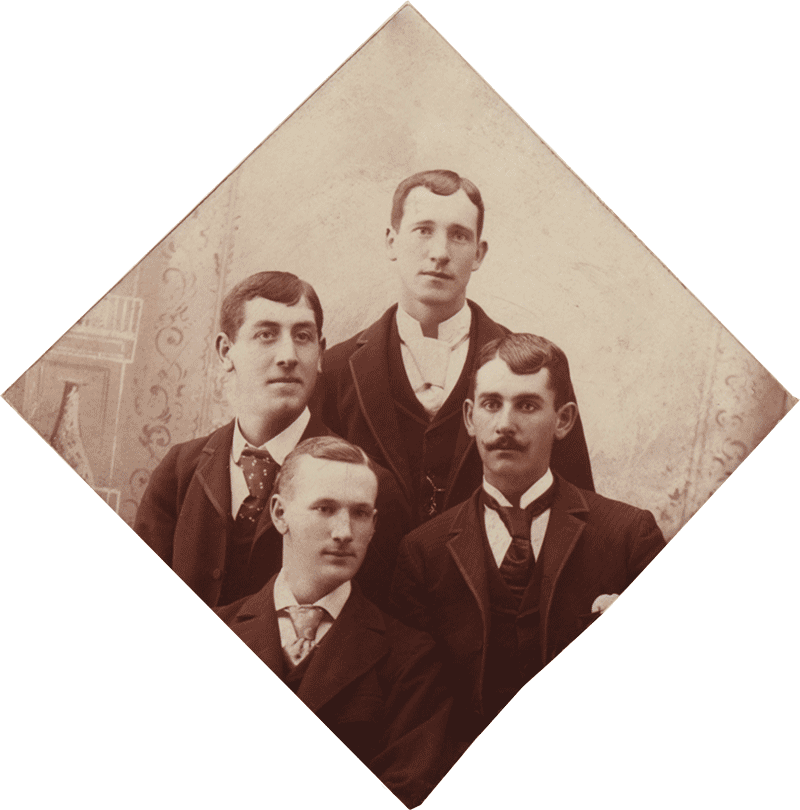
Charles (right) and three friends, circa 1875
This undated picture shows young men their twenties. Charles was 23 when he married, so this may be a wedding picture.

Close-up of the wedding certificate, signed by Minister of the Gospel H. N. Van Deuzen (Methodist Episcopal Church)
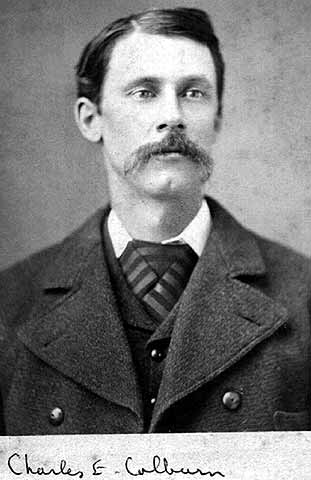
Charles Edward Colburn circa 1880
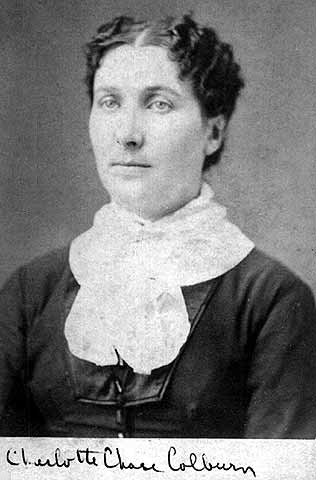
Charlotte Chase Colburn circa 1880
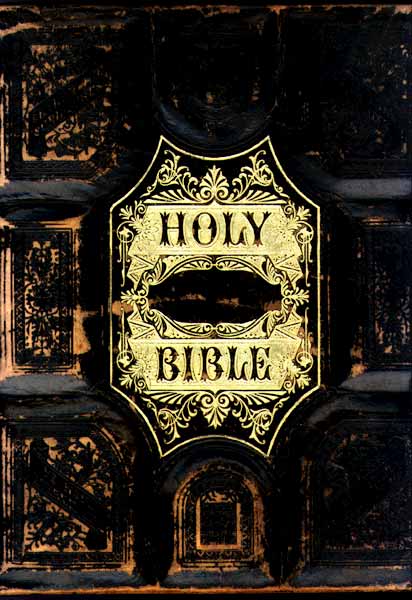
Charles Colburn family Bible, kept and annotated for many years by Charles' daughter Lena. In possession, in 2014, of Robert Colburn II, Massachusetts
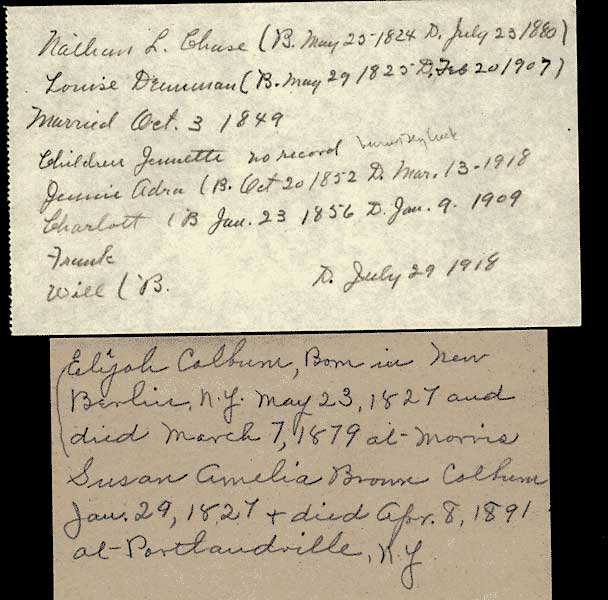
Inserts in the Bible give details about the families of Charles and Charlotte's parents.
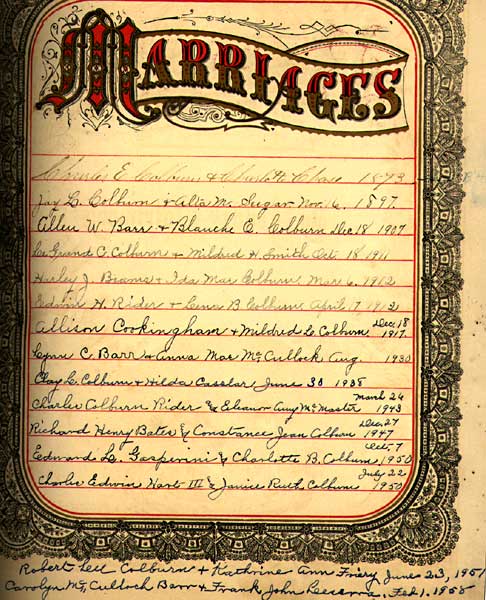
Names and dates for marriages over three generations appear on the Marriages page of the family Bible.
- Charles E Colburn + Charlotte Chase 1873
- Jay L Colburn + Alta M. Seegar Nov 16, 1897
- Allen W Barr + Blanche E Colburn Dec 18, 1907
- LeGrand C. Colburn + Mildred H. Smith Oct 18, 1911
- Harley J. Beams + Ida Mae Colburn, Mar 6, 1912
- Edwin H. Rider + Lena B. Colburn April 17, 1912
- Allison Cookingham + Mildred L Colburn Dec 18, 1917
- Lynn C Barr + Anna Mae McColloch Aug 1930
- Clay L Colburn + Hilda Cassler June 30, 1938
- Charles Colburn Rider and Eleanor Amy McMaster March 26, 1943
- Richard Henry Bates and Constance Jean Colburn Dec. 27, 1947
- Edward [actually Edwin] L. Gasperini and Charlotte B. Colburn Oct. 7, 1950
- Charles Edwin Hart III and Janice Ruth Colburn July 22, 1950
- Robert Lee Colburn + Kathrine Ann Friery, June 23, 1951
- Carolyn McCulloch Barr + Frank John Leesonne? Feb 1, 1958
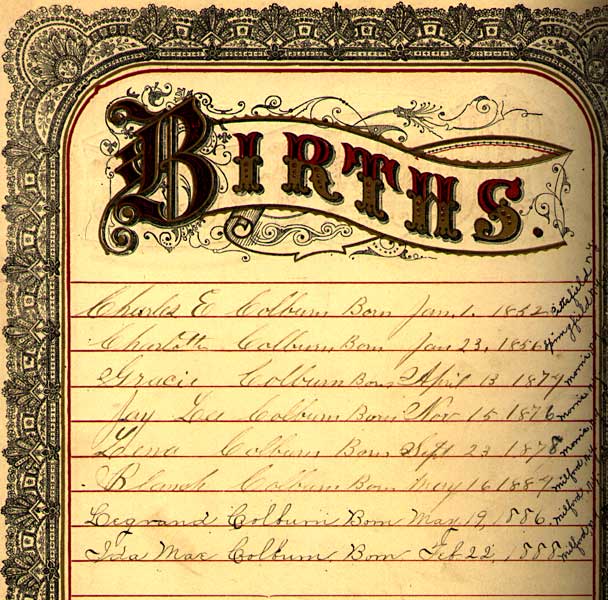
The Births page lists those of Charles, Charlotte and their children.
- Charles E Colburn Born Jan 1, 1852 (Pittsfield, NY)
- Charlotte Colburn Born Jan 23, 1855 (Springfield, NY)
- Gracie Colburn Born April 1, 1874 (Morris, NY)
- Jay Lee Colburn Born Nov 15, 1876 (Morris)
- Lena Colburn born Sept 23, 1878 (Morris)
- Blanche Colburn Born Mary 16, 1884 (Milford)
- Legrand Colburn Born Ma 19, 1886 (Milford)
- Ida Mae Colburn Born Feb 22, 1888 (Milford)
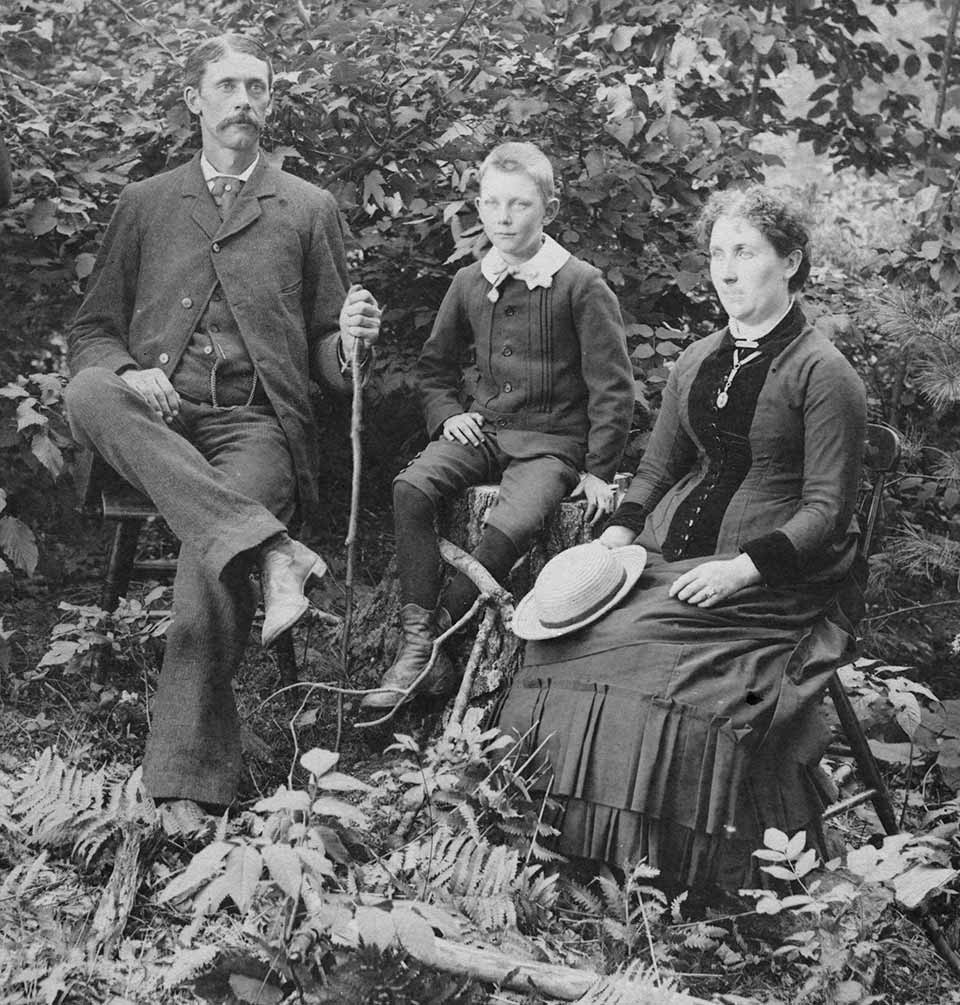
Charles, Jay and Charlotte Colburn circa 1884
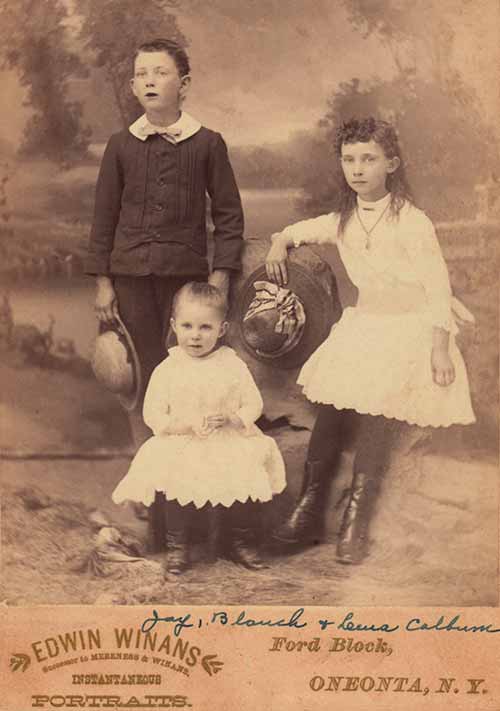
Jay, Blanche, and Lena Colburn circa 1886
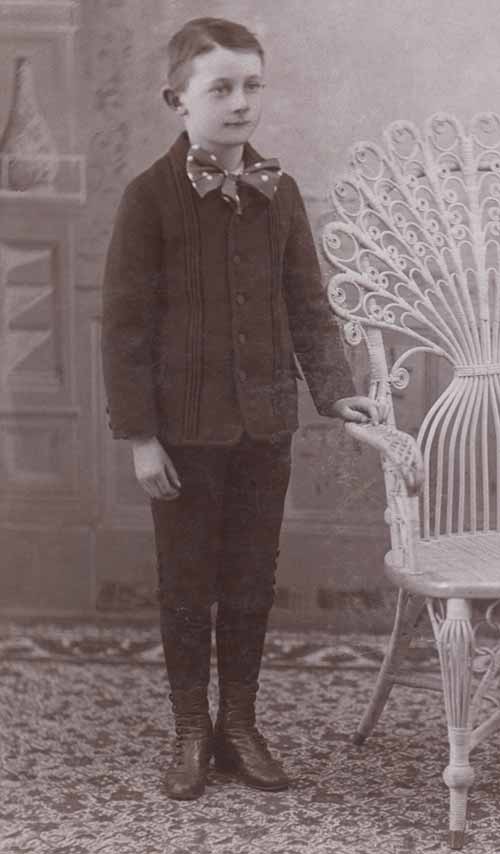
Legrand Colburn circa 1892
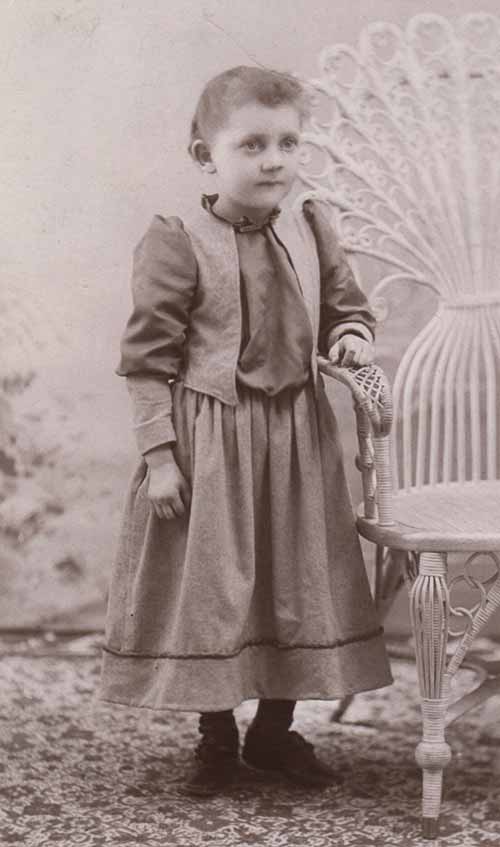
Ida Mae Colburn circa 1892
Hillside Stock and Hop Farm
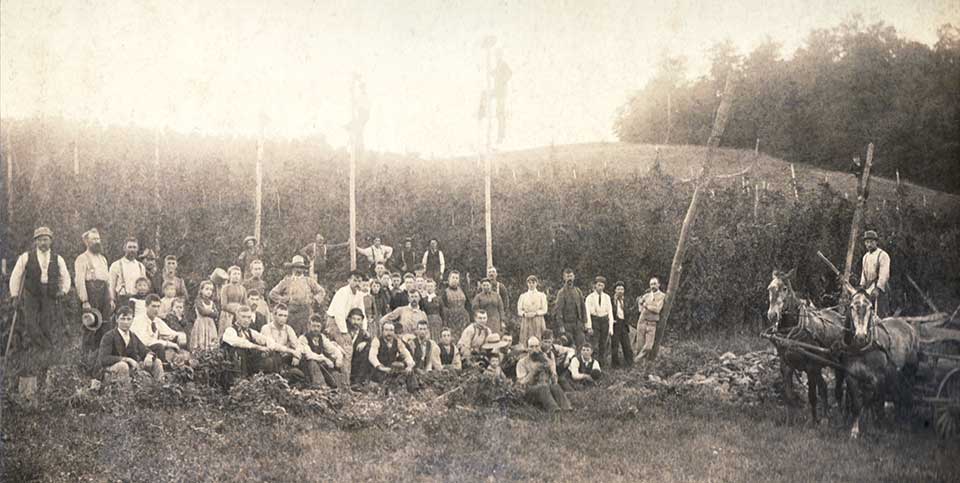
Hop harvest, early autumn, late 1880's or 1890's. Seasonal agricultural laborers, mostly recent immigrants from Europe, were brought out from the cities to pick the crop. Barely visible show-offs have climbed the giant poles erected to support the trellises on which the hop vines grew.
Though Charles's ambitions as a farmer focused on cattle-breeding, for much of his career he also grew hops. The seed cone of the hop vine, hops have been used since the Middle Ages as the chief flavoring and stabilizing agent in beer. Otsego and other “hop belt” counties of central New York led the nation in hop production through much of the 19th century and early 20th centuries. This success made Charles’ lifetime the high point of prosperity for Otsego County.
Hop production began to decline after a blight (downy mildew) appeared in 1909. An attack of aphids in 1914 and increasing competition from hop farms in the Pacific Northwest nearly destroyed hop-growing in New York. By the time Prohibition killed the market for hops entirely in 1920, Otsego farmers had shifted to dairying and growing grain.
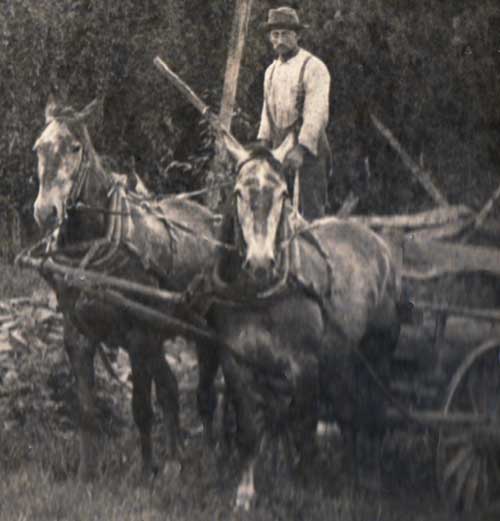
Detail showing Charles Colburn with a team of horses
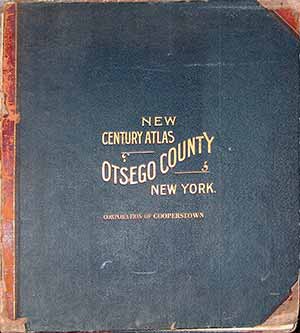
Cover of the New Century Atlas of Otsego County, published in 1903 Ref
An Otsego County atlas published in 1903 includes write-ups of "Some of the Most Valuable and Productive Farms" in the county. The names of these selected farms, which probably belong to farmers who agreed to buy an atlas in advance, appear in red on maps dedicated to each Otsego County town. Charles was apparently among the buyers.
Though the name C.E. Colburn appears twice on the map, next to farms labelled "Fairview" and "Hillside Stock Farm," only Hillside Stock Farm is written up in the Appendix.
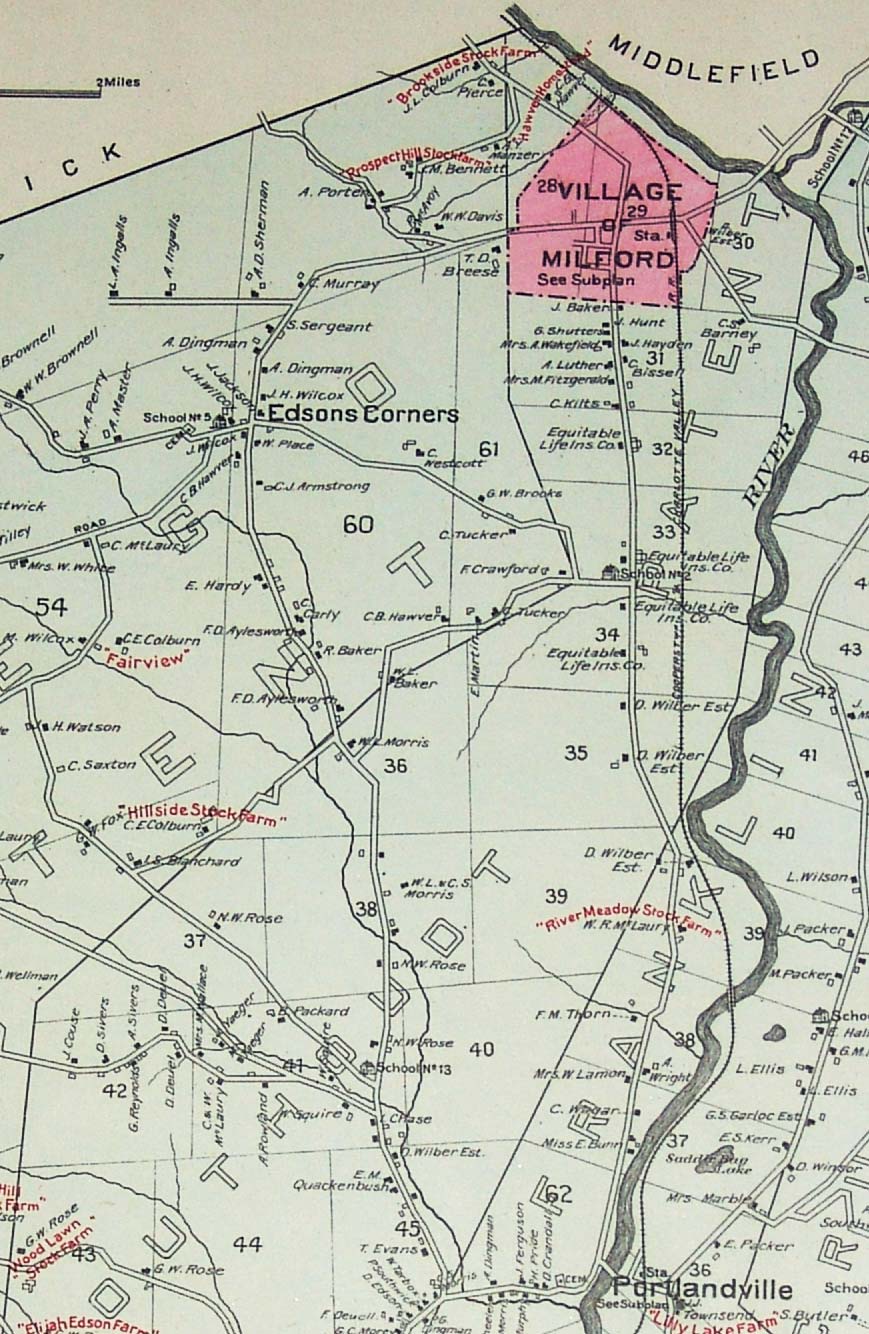
Detail of the 1903 atlas page for the town of Milford. Two farms named in red appear mid-left next to the name C. E. Colburn. The hamlet of Portlandville is lower right. Charles' eldest son Jay owns the "Brookside Stock Farm," above the Village of Milford.
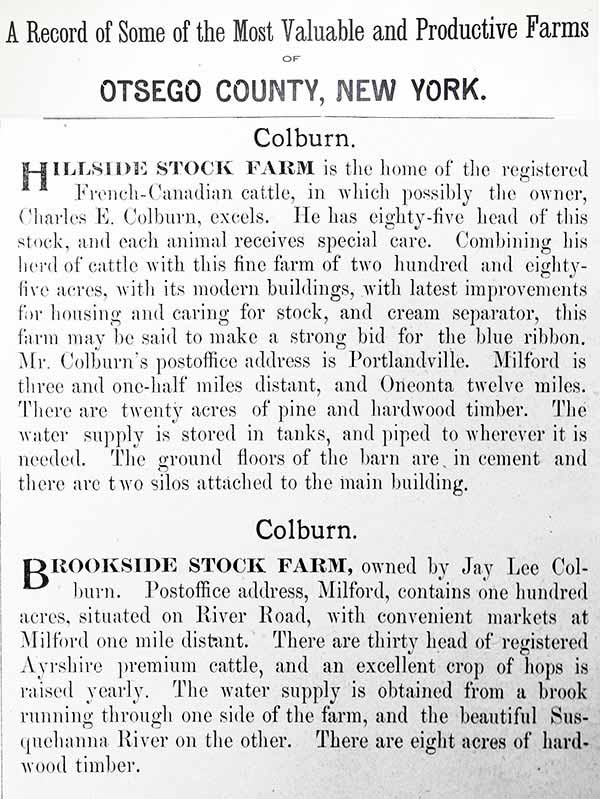
Description of the farms of Charles and Jay Colburn in the 1903 New Century Atlas
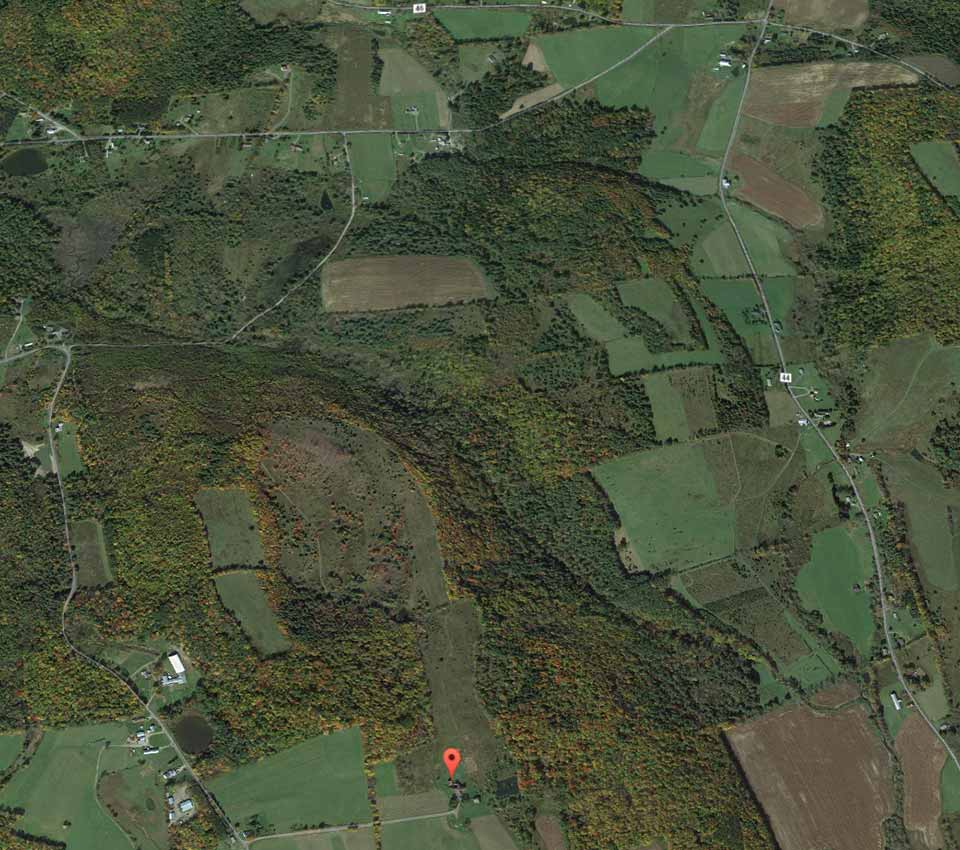
2014 satellite view of the southern part of the map shown above from the 1903 atlas. Though most roads from 1903 still exist, Loucks Road, near the bottom, now dead ends at what once was the Hillside Stock Farm (red marker.) In 1903, the road went on to intersect what is now County Highway 44.
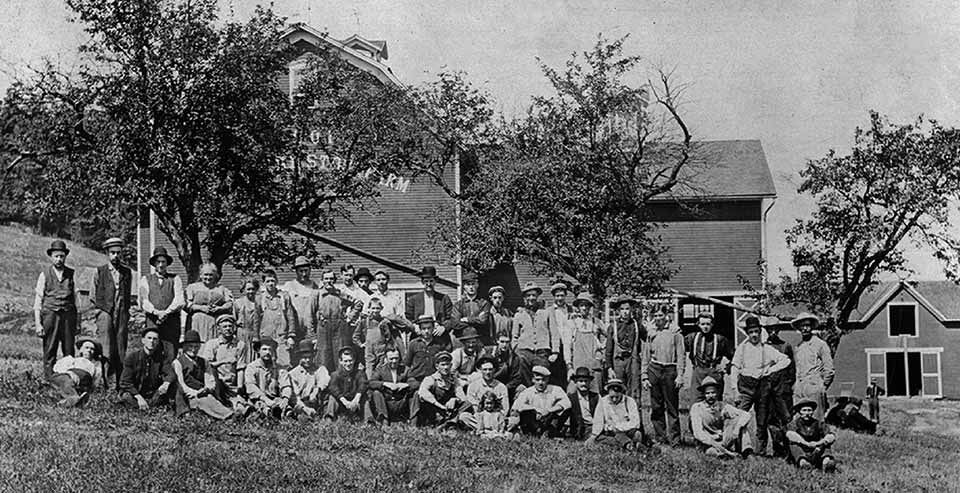
Hop pickers, posed before the main barns of Hillside Stock Farm, built in 1901.
Career Ambition: Cattle Breeder
By the mid-1890s, Charles was engaged in cattle breeding, a type of farming that carries a certain prestige. According to a boosterish article by an anonymous "correspondent" in an 1898 edition of Breeder's Gazette about his hometown Milford, he was one of several farmers there specializing in particular breeds:
An Otsego County Stock Center
The town of Milford, Otsego Co., N.Y., is fast becoming famous for being the home of the largest number of herds of pure-bred cattle of any town in the United States...
A visit to the Hillside Stock and Hop Farm will introduce the first and only herd of registered Canadian cattle in the United States. The proprietor, Mr. C.E. Colburn, imported this herd from Canada, some of the individuals composing it originally coming from Normandy, France. They are the best to be obtained. In addition to stock-raising Mr. Colburn is one of the largest hop-growers of the town...

Masthead of a Chicago-based "Weekly Journal for Farmers and Stockgrowers."
Other Milford stock farms specialized in such breeds as Ayreshires, Holstein-Friesians, Jerseys, Brown Swiss, and Dutch-Belted.
In the Northern part of the town we find at the Brookside Stock Farm the fine herd of Ayrshires owned by E.H. and C.S. Barney... Mr. C.S. Barney is Vice-President of the New York State Agricultural Society.Five years later, in 1903, Brookside Stock Farm was owned by Charles’ eldest son, Jay. The farm was still breeding Ayreshires.
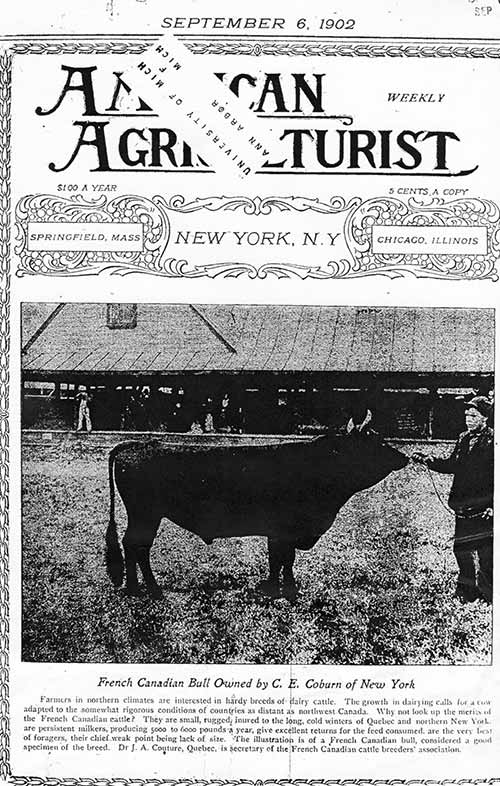
Cover of American Agriculturalist (a weekly magazine for farmers) for September 6, 1902
The cover of another magazine for farmers, American Agriculturalist, featured one of Charles' bulls:
French Canadian Bull Owned by C. E. Coburn (sic) of New York
Farmers in northern climates are interested in hardy breeds of dairy cattle. The growth in dairying calls for a cow adapted to the somewhat rigorous conditions of countries as distant as northwest Canada. Why not look up the merits of the French Canadian cattle? They are small, rugged, inured to the long, cold winters of Quebec and northern New York, are persistent milkers, producing 5000 to 6000 pounds a year, give excellent returns for the feed consumed, are the very best of foragers, their chief weak point being lack of size. The illustration is of a French Canadian bull considered a good specimen of the breed.

French Canadian cattle at the Hillside Stock Farm
For several years around the turn of the 20th century, Charles and his herd swept the French Canadian category of the annual Cattle Show and Fair of the New York State Agricultural Society.
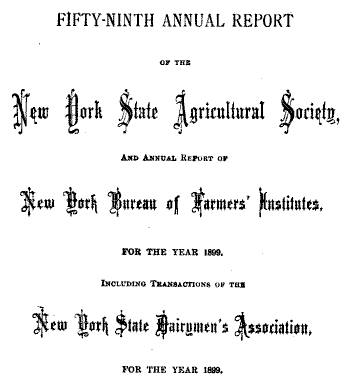
In the 1899 show for example, held at Syracuse September 4-9, he won prizes for best Exhibitor’s Herd, best Breeder’s Young Herd, and two prizes each for best Bull and best Cow. The six prizes of $15 and $20 netted him a total of $100, which in 1899 had the purchasing power of about $2900 in 2014.
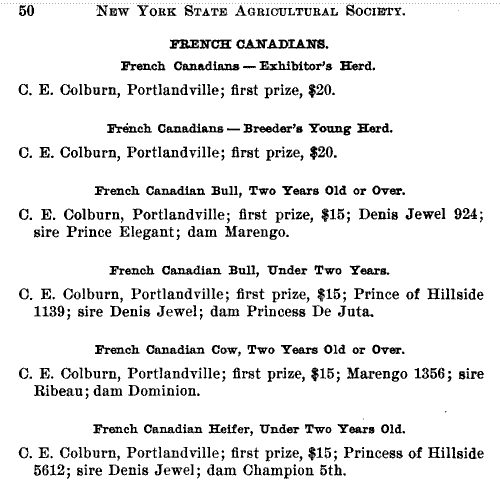
from the 1899 Annual Report of the New York Agricultural Society Ref
Many of the charming names Charles gave his cattle, preserved in the list of prizes and once again available through the Internet, reflected their Quebecois origins. The bull "Denis Jewel" was named for Arsene Denis, a Quebecois breeder from whom Charles bought cattle, and the cow "La Countesse St. Norbert" for St. Norbert, the village near Trois Rivieres P.Q. where Denis lived.
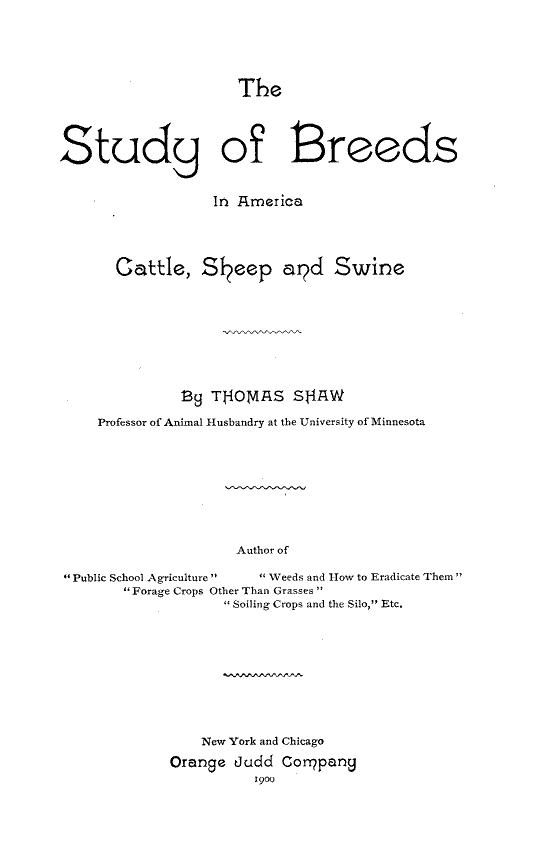
Title page of a 1900 book, The Study of Breeds in American Cattle, Sheep and Swine
His French Canadians were also discussed in a 1900 book about breeds of American cattle, sheep and pigs.

Depiction of La Countesse St. Norbert, owned by Chas. E. Colburn, in The Study of Breeds in American Cattle, Sheep and Swine
"La Countesse" is not quite French. M. Arsene Denis, from whom Charles bought his Canadians, would have called this noble beast "La Comptesse."
Charles won prizes further afield than Syracuse, as well. In 1895 he won two bronze medals at the Cotton States and International Exposition in Atlanta, Georgia. According to his granddaughter Charlotte Colburn Gasperini, he took along his nine-year-old son Legrand, to whom he gave the medals.

Postcard from the Cotton States and International Exposition of 1895, showing the Agricultural Building. Cattle judged here could win gold, silver, or bronze medals.
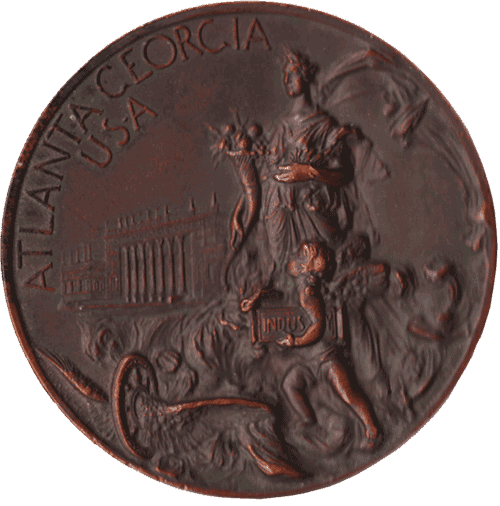
One of two bronze medals C.E. Colburn won at the Cotton States and International Exposition

The Exposition Awards Committee examined about 6000 exhibits, and awarded 634 gold medals, 444 silver, and 495 bronze. A site for collectors of exposition medals describes the medal as follows:
6mm thick, 57 mm diameter. On obverse ‘Atlanta Georgia USA’, Columbia in long chiton, holding a cornucopia filled with fruit in right arm, standing to left: in front of her, a winged wheel, and a small winged genius bearing a tablet inscribed INDUSTRY; in background to the left is the Fine Arts Building. Singed ‘PH MARTINY SC NY’, this medal is notable as the sole signed work of metallic art by famous sculpture artist Philip Martiny 1858-1927 whose baby-like winged cherub has become the emblem of generations. “With its exuberant allegorical design and lovely modeling, Martin’s Cotton States Exposition medal exemplifies the high Beaux-Arts style of decorative sculpture.”
The reverse has a palm leaf, the American eagle, a cotton plant and the legend ‘COTTON STATES AND INTERNATIONAL EXPOSITION AWARDED TO [C.E. Colburn] ATLANTA GEORGIA USA MDCCCXCV’. The medals were executed upon a design prepared under the supervision of Mr. Horace Bradley, Chief of the Department of Fine Arts, and were delivered in the Summer of 1896, while the World’s Columbian medals, awarded two years earlier, were being delivered. Ref
An Up-to-Date Barn
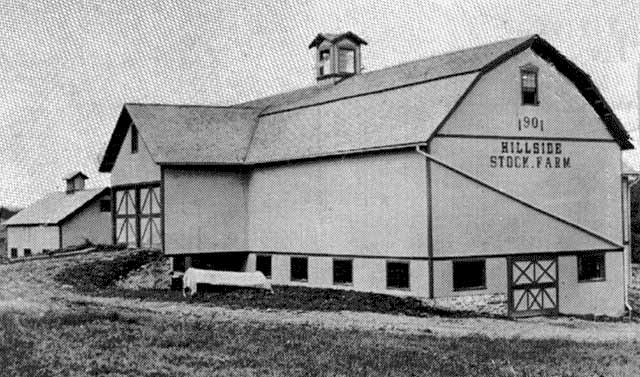
Main barn of Hillside Stock Farm, 1903
For his prize-winning cattle, Charles built an "up-to-date barn," according to a 1908 book about barn architecture. Another book about New York barns, written a century later, summarized the Colburn barn as follows:
At the beginning of the twentieth century...new barns in New York had stone foundations, wood frames, and wood cladding. "An Up-to-Date New York Barn" singled out in a book of barn plans was praised for its cement floors, a recent innovation. The rest of the sizable building, owned by C.E. Colburn of Portlandville, was very traditional in its use of materials...The foundation was fieldstone, and the principal components of the frame were heavy timbers, which were held together with mortise and tenon joints. The exterior was clad in vertical wooden boards, and the gambled roof was finished with wood shingles. The two round silos were constructed from wooden staves held in place with iron bands. Coburn's Hillside Stock Farm was "up-to-date" in terms of its facilities for efficient feeding, breeding and processing, but its concrete floor with mangers and manure gutters was the owner's primary foray into modern materials. Ref
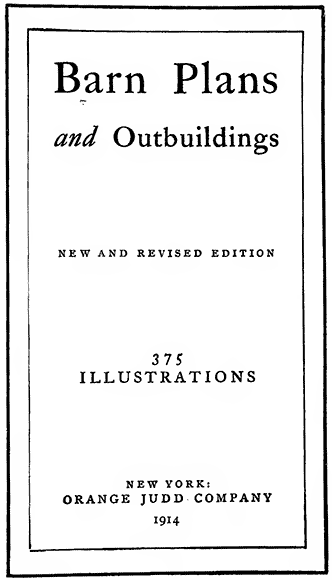
Title page of the 1914 edition of Barn Plans and Outbuildings
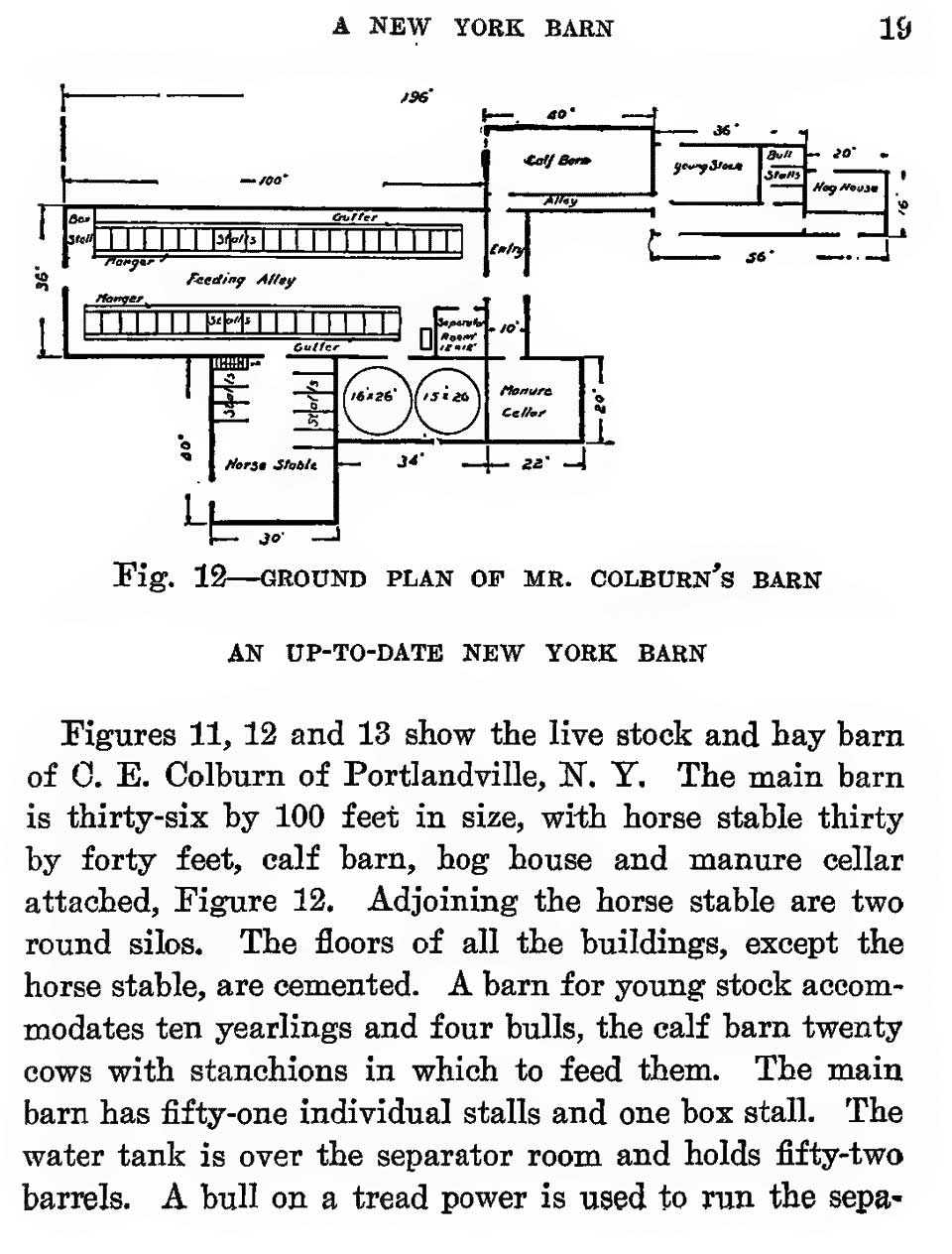
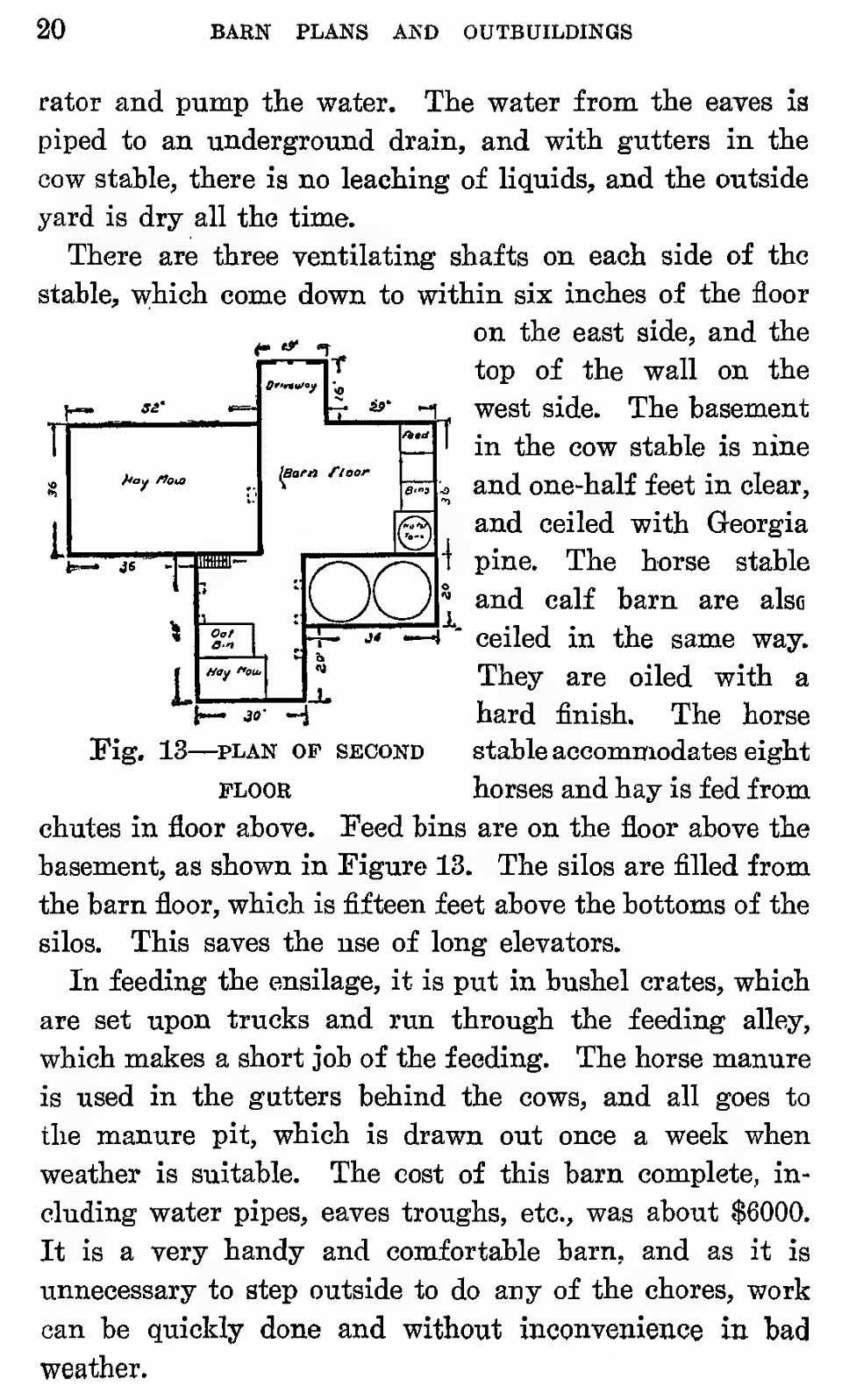
Two-page chapter in Barn Plans and Outbuildings describing "An Up-to-Date New York Barn"
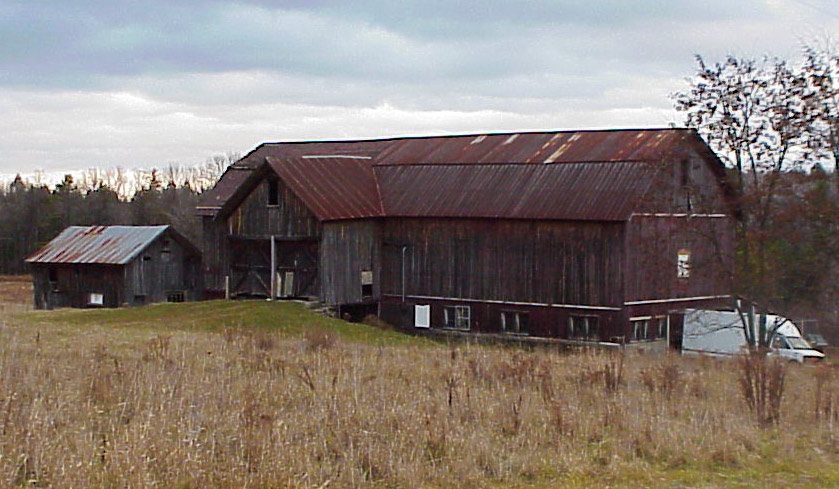
Hillside Stock Farm barn from the southwest, 2001.
The barn still exists in 2014, though in a deteriorated condition.
In her 2012 study of New York barns, Cynthia Falk says:
When built, the barn at Hillside Stock Farm cost about $6000 and was touted as handy, comfortable, and up-to-date. Today, high maintenance costs and lack of use have jeopardized the integrity of the structure.$6000 in 1901 dollars had the purchasing power of about $174,000 today.

Hillside Stock Farm barn from the south, 2008. Bill Gasperini talks with the current owner, Ms. Susan Ward.

Hillside Stock Farm barn from the north, 2010 (photo Cynthia Falk)
A Farmhouse Mystery
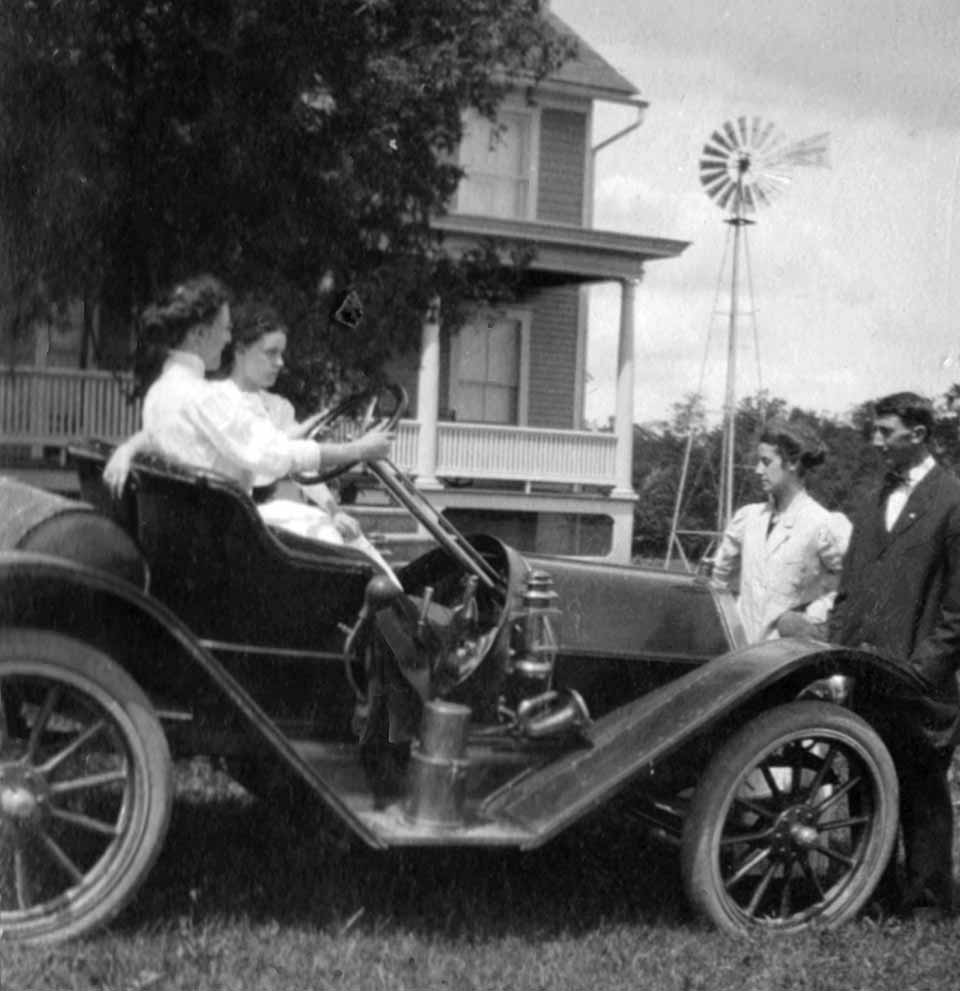
May Colburn, Christine Briggs, Mildred Smith Colburn, Legrand Colburn with Legrand’s car (probably a 1914 Metz Runabout) in front of a Charles Colburn farmhouse

"Colburn Farmhouse near Edson's Corners," according to a note on the back of one copy of this photo.
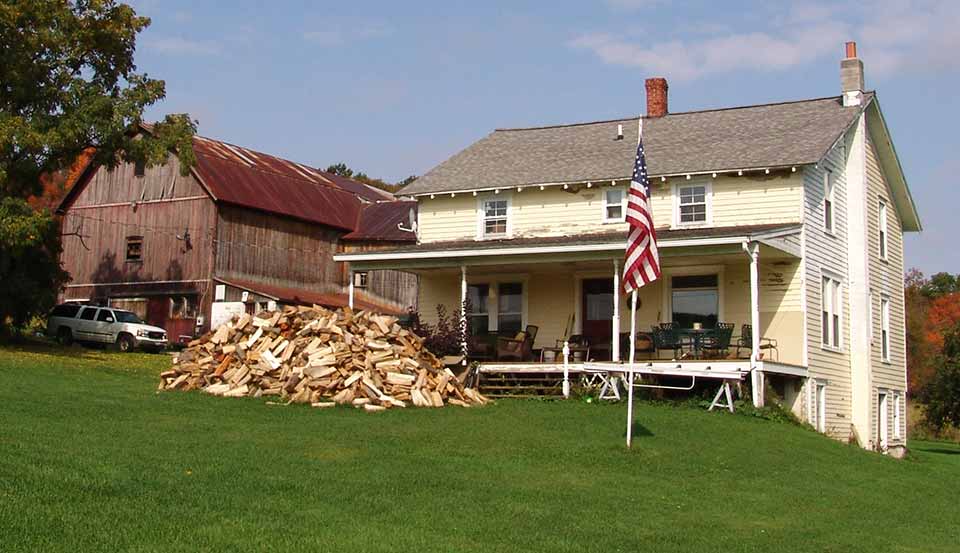
Farmhouse next to the Hillside Stock Farm barn in 2008
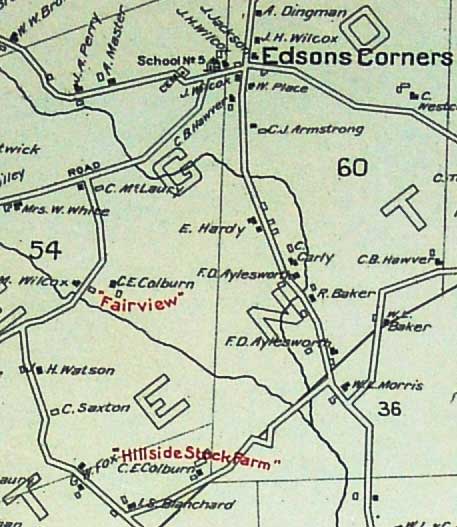
1903 atlas, Milford page detail
These are radically different structures. Though houses can of course change over such a long period, the position of chimneys rarely does. Though both photos look upslope toward the house, only in the modern image does a barn appear in the background.
One possible explanation for this discrepancy can be found in the 1903 atlas cited earlier. The name C.E. Colburn appears twice on the Milford page: by the red label “Hillside Stock Farm,” and further to the north, by another named farm, “Fairview.” The house and barn labeled “Fairview” no longer exist; only cornfields appeared at that location in 2014. Perhaps Hillside Stock Farm extended all the way across the creek to “Fairview,” and Charles had buildings at both ends. The larger farmhouse might have once been at the northern, “Fairview” end, which is much nearer to Edson’s Corners. The smaller house near the big barn at the southern end might have housed workers or other family members.
Charles maintained at least two houses - one at the farm, and one "downtown" in Milford village. His ledger from 1913 (see below) includes entries for one domestic and a modest number of hired farm laborers, and does not include any rental income. It seems unlikely that he had a second house on the hill by that year. Alas, at this point there may be no-one alive who could clarify.

Bringing in the hay: Charles atop the wagon left, his son Legrand on the wagon right.
Death of Charlotte; Remarriage to Kathryn

From the 1900 census for Milford, NY. Charles and Charlotte live with at least four children (the youngest may be listed on the next census page.)
The 1900 census shows Charles at 48, living with Charlotte, 44. She is listed as the mother of six, five of whom survive and live with them. All can read and write. Jay, 23, listed as "farm laborer," is apparently not yet owner of the farm he will have in 1903. There is a mortgage on Charles' property.
From The Otsego Farmer, January 15 1909:
Charlotte L. Chase, wife of Charles E. Colburn, died at her home in Milford early Saturday morning, aged fifty-three years, Death, which was very sudden, resulted from heart disease. She was a woman of many lovely and estimable qualities that gave her a high place in the regard of all who knew her.
Mrs. Colburn is survived by her husband and five Children, two sons and three daughters; Jay L., of Milford, LeGrand, at home, Mrs. A.W. Barr, Berkshire, and Misses Lena and May, also at home; one sister, mrs. J.H. Bennett, of Milford and two brothers, the Rev. F.J. Chase, of Buffalo and Will N. Chase, of Portlandville. The funeral was held at the residence in Milford village, Tuesday, at 2 p.m., the Rev. E.R.D. Briggs officiating. Interment in Milford cemetery.
FUNERAL OF MRS.CHARLES E.COLBURN
Milford, Jan. 12 The funeral of Mrs. Charles E.Coburn was held from her late home at 2 o'clock today and,in spite of the heavy snowstorm, the spacious home was filled to overflowing with sorrowing relatives and friends. Rev. E.R.D.Briggs, the officiating clergyman, read selections from Psalm xe. and from I.Corinthians, xvi, and upon them based a disclosure that was full of comfort and hope. A quartette composed of Mrs. Kent Barney, Mrs. W.R.Seeber, Claude Hall and Fred Teal, with Miss Grace Luther at the piano, sung favorite selections. The floral tributes were many and beautiful, coming from outside friends, the church, Sunday school and fraternal societies with which the family are affiliated. Letters were also recieved from distant friends, expressing their tenderest love and sympathy for the sorrowing family.
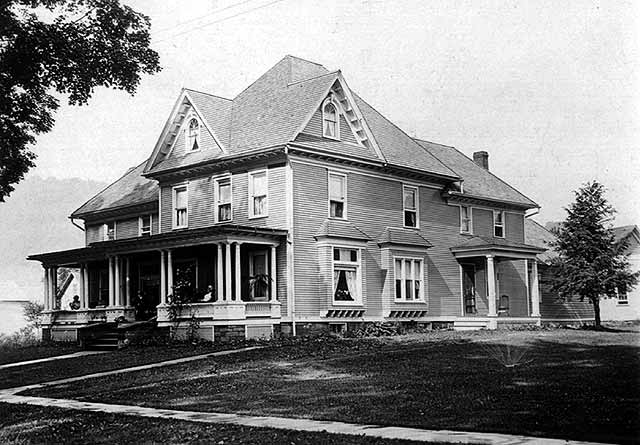
Charles Colburn house on South Main Street, Milford Village

From a Milford, NY page of the 1910 census
The 1910 census shows Charles at 58, newly married to his second wife Kathryn, 53. It is a second marriage for both. Charles owns the house on South Main Street, Milford Village, and a “general farm.”
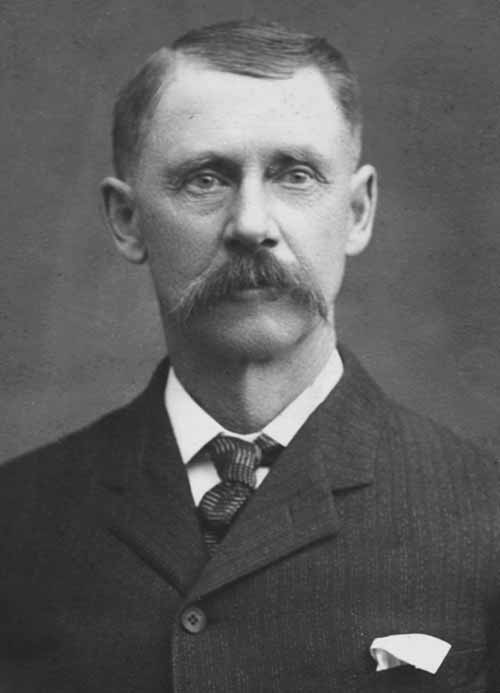
Charles Colburn in 1908
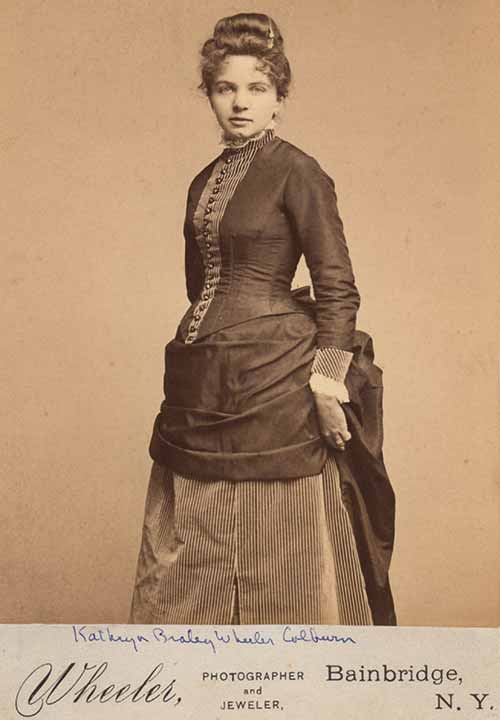
Kathryn Colburn as a young woman, during her first marriage to photographer Sheldon Wheeler in Bainbridge, NY, a town in southern Otsego county between Oneonta and Binghamton.
A Farm Ledger
Charles' ledger for 1913 has survived. By that year he seems to have shifted the focus of his farm from stock breeding to dairying. Improvements in transportation, refrigeration and pasteurization, along with population growth in New York City, made dairy farming a more profitable business in central New York. Receipts divide almost evenly between the sale of hops and of milk. No expenses or receipts appear to be associated with cattle breeding or trading.
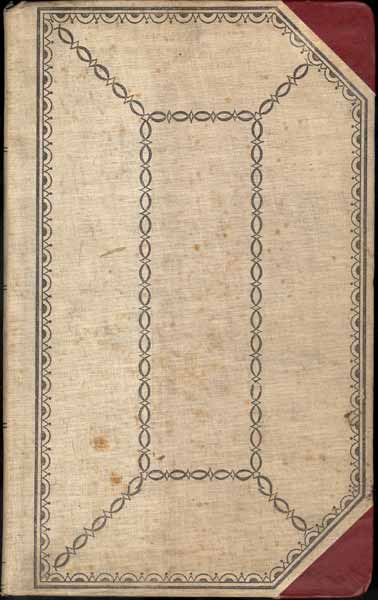
Cover of Charles Colburn farm ledger for 1913
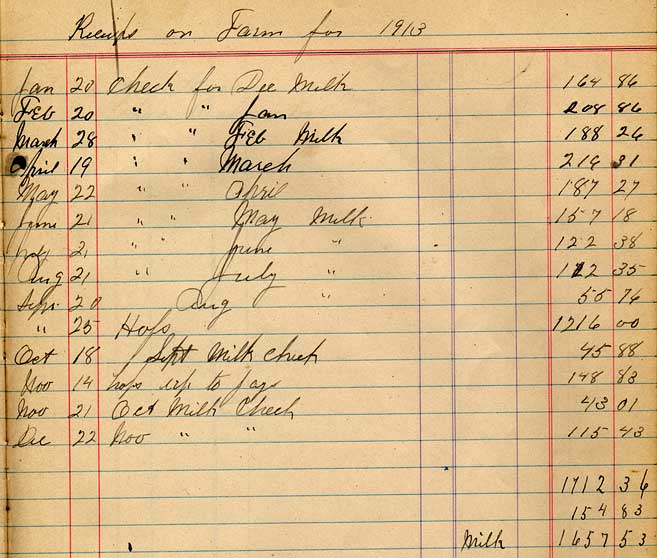
Receipts page, Charles Colburn farm ledger for 1913
Charles seems to have met with limited success in promoting his chosen breed (aside from sweeping cattle show prizes in a category for which there may have been no other entrants.) About the same time he began promoting it further south, the “Canadienne" breed began to decline in its country of origin. From Wikipedia:
Canadienne cattle...originated in the 16th century, when French settlers brought cattle over for foundation stock to settle Canada. Canadiennes were the most common breed of domestic cattle in Canada until the late 19th century, when other breeds began to displace them... The Canadienne, though still found on farms and ranches across the nation, is now comparatively rare except in certain portions of northern Quebec Province.
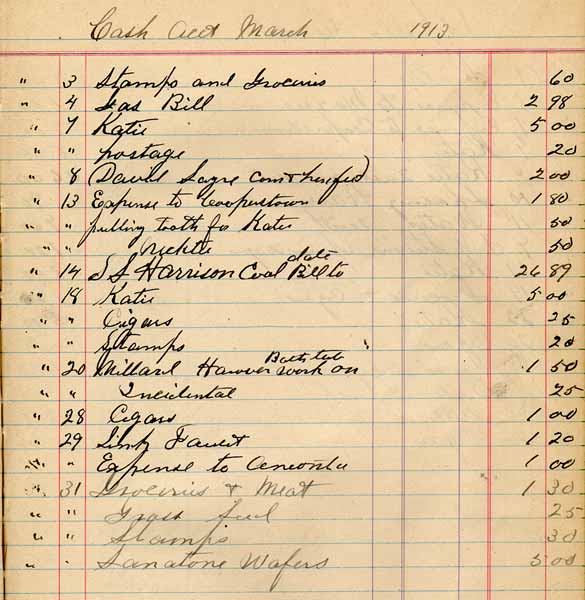
First page for Expenses, Charles Colburn farm ledger for 1913
Entries in the ledger display the tight interconnections of small town life. Charles lists purchases of:
-groceries from his son-in-law Harley Beames
-rake teeth and a pump from James E. Smith, father of his new daughter-in-law Mildred Smith Colburn
-hardware from Millard Hawver, also a relative of Mildred’s.
A sense of his daily life can be traced in the full 1913 ledger. Charles buys cigars, goes to church suppers and county fairs, throws holiday parties, pays farm workers, reads newspapers, pays taxes, and takes trips to nearby towns.
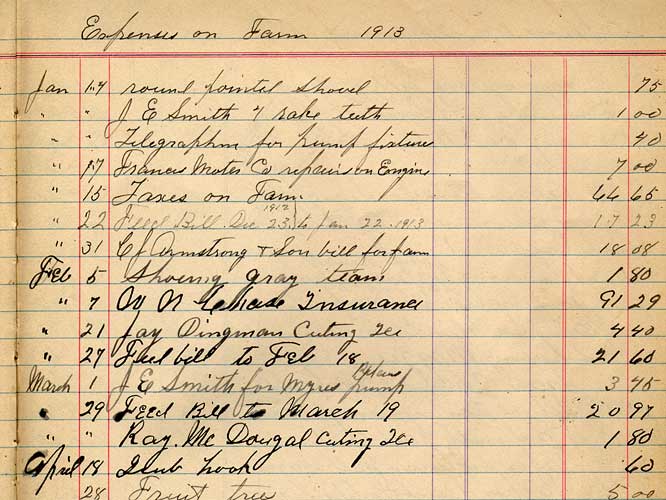
First page for Expenses, Charles Colburn farm ledger for 1913
Death of Charles
From The Otsego Farmer, January 21, 1916:
Charles E. Colburn died at his home in Milford, Saturday evening last, after several weeks' illness with vavular heart disease. He was a man held in the highest respect by everyone and his death has cast a gloom over the entire village.
Mr. Colburn was born in the town of Pittsfield in 1851 and in in 1872 was married to Miss Charlotte Chase of Laurens. A few years later they came to this town and purchased a farm about three miles from the village where they resided until about fourteen years ago when they purchased a residence in this village. Seven years ago Mrs. Colburn died and later Mr. Colburn was married to Mrs. Kathryn Braley of Morris, who survives him.
Mr. Colburn has been a member of the village board of trustees for several years and one of its most earnest workers. He was also a member of the Milford Independent Order of Odd Fellows.
Besides the wife mentioned, he is survived by three daughtes and two sons, Mrs. Allen Barr, Berkshire; Mrs. E.H. Rider, Mrs. H.J. Beams, Legrand Colburn of Milford and Jay L. Colburn of Oneonta.
The funeral was held at his late residence, Tuesday afternoon at 2 o'clock, the Rev. E.R.D. Briggs of the methodist Episcopal church, Portlandville, officiating. Interment in the family plot in the Milford cemetery.

Charles and Charlotte grave in the Milford cemetery
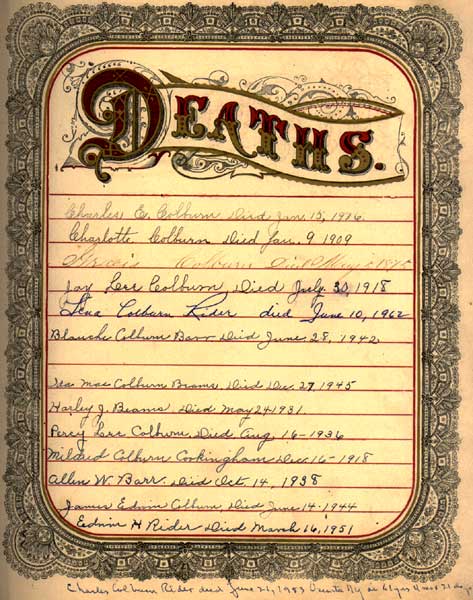
Colburn Bible, page for recording Deaths
- Charles E Colburn Died June 15, 1926
- Charlotte Colburn Died Jan 9, 1909
- Gracie Colburn Died May 1875
- Jay Lee Colburn Died July 30, 1918
- Lena Colburn Rider Died June 10, 1962
- Blanche Colburn Barr Died June 28, 1942
- [Lena Colburn left a line blank line for the brother who survived her, by one year:
Legrand Colburn Died Jan 11, 1963] - Harley J Beames Died Dec 27, 1945
- Percy Lee Colburn Died Aug 16, 1936
- Mildred Colburn Cookingham Died Dec 16, 1918
- James Edwin Colburn Died Oct 14, 1938
- Allen W. Barr Died June 14, 1944
- Edwin H Rider Died March 16, 1961
- Charles Colburn Rider Died June 21, 1993
Generations XIII and On
This chronicle of the Colburns ends, for the time being, in the early years of the 20th century, beside the tomb of Charles and Charlotte.
In writing the history of the first twelve generations, the challenge has often been to tease out what few bits of information can be found in the historical record. Writing the history of the 20th and 21st century generations will present a very different challenge: paring down and making sense of voluminous source material. How much of this I ever get to myself remains to be seen.
Perhaps when many more generations have passed, and most of the CD-ROMs and servers we current generations rely on for our records have one way or another failed, some future Colburn descendant will find this website in some obscure archive, and be inspired to troll the digital archives to assemble from the pieces that survive a narrative of what came next. Whoever and whenever you are, more power to you.
The names, birthdates and place of birth of Charles and Charlotte's grandchildren and great-grandchildren appear below, as entered in the family Bible by Lena Colburn Rider.

Mildred and Legrand Colburn surrounded by their children Robert, Janice, James, Charlotte, Clay (back row) and Elizabeth, Constance, and daughter-in-law Hilda, 1939
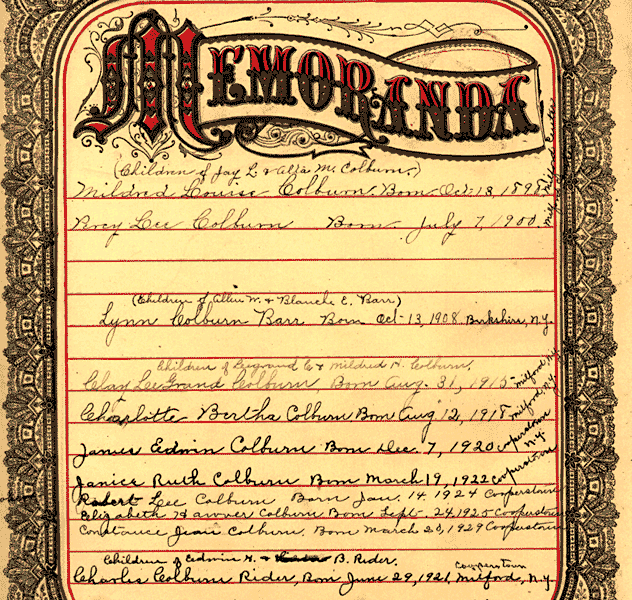
A Memoranda page in the Colburn family bible, used to record births of Charles and Charlotte's grandchildren
- Children of Jay L. & Alta M. Colburn
- Mildred Louise Colburn. Born October 18, 1898 Milford, NY
- Percy Lee Colburn. Born July 7, 1900 Milford, NY
- Children of Allen W. & Blanche E. Barr
- Lynn Colburn Barr. Born October 13, 1908 Berkshire, NY
- Children of Legrand E & Mildred H. Colburn
- Clay Legrand Colburn. Born Aug 31, 1915 Milford, NY
- Charlotte Bertha Colburn. Born Aug 12, 1918 Milford, NY
- James Edwin Colburn. Born Dec 7, 1920 Cooperstown NY
- Janice Ruth Colburn. Born March 19, 1922 Cooperstown NY
- Robert Lee Colburn. Born Jan 14, 1924 Cooperstown NY
- Elizabeth Hawver Colburn. Born Seot 24, 1925 Cooperstown NY
- Constance Jean Colburn. Born March 20, 1929 Cooperstown NY
- Children of Edwn H & ? B. Rider
- Charles Colburn Rider. Born June 29, 1921. Cooperstown, N.Y.

Births of great-grandchildren were recorded on blank pages of the Colburn Bible.
- Children of Lynn C. and Anna Mae Barr
- Carolyn McCulloch Barr. Born March 12, 1934 at Albany
- Allen George Barr. Born January 2, 1942 at Albany
- Children of Clay L and Hilda Colburn
- David Jackson Colburn. Born September 12, 1941 at Jacksonville, Ill.
- Cheryl Lynne Colburn. Born December 7, 1946 at Middleville, N.Y.
- Children of Charles C. & Eleanor Amy Rider
- Carolyn Elen Rider. Born May 15, 1944 at Sioux Falls, South Dakota
- James William Rider. Born August 2, 1946 Syracuse New York
- Mark McMaster Rider. Born December 21, 1947 Oneonta New York
- Children of Richard Henry Bates and Constance Jeanne Bates
- Michael Richard Bates. Born September 20, 1951. Cooperstown, N.Y.
- Margaret Elizabeth Bates. Born August 25, 1953. Cooperstown, N.Y.

Another blank page used to record births of great-grandchildren.
- Children of Charles E & Janice Ruth Hart
- Constance Colburn Hart. Born February 13, 1952. Norfolk, Va.
- Kathryn Wainwright Hart. Born December 3, 1954
- Stephanie Smith Hart. Born June 3, 1957
- Children of Ed[win] L & Charlotte B. Gasperini
- James Legrand Gasperini. Born October 31, 1952 Great Neck, L.I.
- William Edwin Gasperini. Born September 14, 1954 Great Neck, L.I.
- John Robert Gasperini. Born Nov. 2, 1955 Cold Spring, NY
- Susan Charlotte Gasperini. Born April 12, 1958 [Cold Spring, NY]
- Children of Frank J. + Carolyn M. Leeserra(?)
- Jeffrey John Leeserra(?). Born January 14, 1959 Pompano, Florida
- James Frank Leeserra(?). Born September 28, 1960 Pompano, Florida
- Children of Robert Lee and Kathrine Ann Colburn
- Robert James Colburn. Born May 30, 1960. Woodbury, Conn
- [Jennifer Colburn. Born August 27, 1964, Waterbury, Conn]